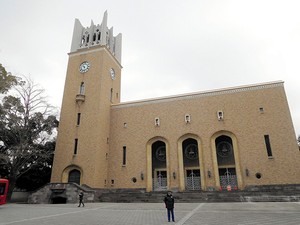By TETSUYA ISHIKURA/ Staff Writer
December 18, 2024 at 18:29 JST
Tokyo-based startup Space One Co.'s second attempt to launch a rocket to propel it into the space-delivery service business failed shortly after the Kairos 2 lifted off around 11 a.m. on Dec. 18. 
The company suspended the small rocket's flight some 10 minutes after launch from Space Port Kii in Kushimoto, Wakayama Prefecture, and purposefully detonated the craft.
No private Japanese company has successfully sent a satellite into space via rocket.
Space One's first attempt in March with its inaugural Kairos rocket ended abruptly when it exploded five seconds after launch. The second December launch was postponed twice due to strong winds.
‚ÄúWe want to contribute to the development of the space industry by launching a highly convenient satellite,"¬†said Masakazu Toyoda, company president, at a news conference at the end of November leading up to the Kairos 2's launch. "All of us are determined to make it successful this time.‚Ä̬†
The satellites on the Kairos 2 were built by Terra Space, another venture based in Kyoto Prefecture; a Taiwanese space institute; and high school students from Hiroo Gakuen in Tokyo. One also featured a Buddha statue as a "space temple."
PREDICTIVE MISSTEP
This three-stage solid-fuel rocket is a new creation from Space One, established six years ago. It developed it with technical cooperation from IHI Aerospace Co., producer of Japan’s flagship rocket Epsilon; Canon Electronics Inc., which makes rocket systems equipment; and other investors.
Had the launch gone smoothly, the roughly 18-meter-tall rocket with a diameter of 1.4 meters would have burned through its booster engines to ascend to an altitude of around 500 kilometers. The rocket would next shoot out five small satellites into orbit about 54 minutes after liftoff, according to the company's plan.   
In August, Space One announced that the cause of the March liftoff's failure was that ‚Äúthe rocket judged that the speed immediately after launch was slower than predicted and detonated on its own.‚ÄĚ
The company explained that it was the predictive technology's method that was at fault and that there was no problem with the rocket itself.
Regardless, these are costly errors. The Cabinet Secretariat's small satellite that was aboard cost approximately 1.1 billion yen ($7.2 million) to develop fell to the ground before it plummeted back to Earth. 
While the cost of launching the Kairos has not been disclosed, 1 billion yen is the average price tag to launch a small rocket.
Space One is not the only private venture with its eyes on the stars. In May 2019, a small rocket named Momo developed by Interstellar Technologies Inc., headquartered in Taiki, Hokkaido, reached an altitude of more than 100 km.
This was a first for Japan's private rocket companies, but it was not ferrying a satellite.
ROCKET SHORTAGE
In recent years, the launch of small and relatively low-cost satellites has increased rapidly as the space business expands. Among other crafts, 2,368 satellites jetted into space in 2022, an increase of about 11 times over the past decade or so. However, there are not enough rockets to carry them. 
Large rockets, such as Japan's new flagship rocket H3, is one option. Another is the Falcon 9 from the U.S. company SpaceX that does more than 100 rocket launches a year.
However, they are inconvenient to transport satellites because those who wish to make them carry their satellites have long waits while these rockets are being developed, and also there are many other satellites that are waiting for the rockets.
The large rockets were also inconvenient because they sometimes cannot put satellites into the most suitable orbits.
The cost to launch aboard these large rockets is relatively inexpensive, but the inconvenience is similar to that of a bus, where passengers share its ride.
Therefore, there is a need for small rockets that can be launched at a high frequency in a small turnaround time, like a taxi.
They can be launched at any time as a dedicated flight for their own satellites without waiting. Even though the unit launch cost is high for satellite operators, the advantages are even greater. 
Space One focused on solid fuel, which is easier to develop, transport, and store than the liquid fuel used in large rockets.
The company invited engineers from companies that had been involved in the development of Japanese rockets, such as the Epsilon, to help build its new rocket.
The company has also established its own launch site, Spaceport Kii, in Kushimoto, Wakayama Prefecture, the southernmost tip of the main Japanese archipelago.
Space One is aiming to launch its rocket 20 times a year by the end of 2020s to lower the unit cost of launches.




















A peek through the music industry’s curtain at the producers who harnessed social media to help their idols go global.
A series based on diplomatic documents declassified by Japan’s Foreign Ministry
Here is a collection of first-hand accounts by ‚Äúhibakusha‚ÄĚ atomic bomb survivors.
Cooking experts, chefs and others involved in the field of food introduce their special recipes intertwined with their paths in life.
A series about Japanese-Americans and their memories of World War II